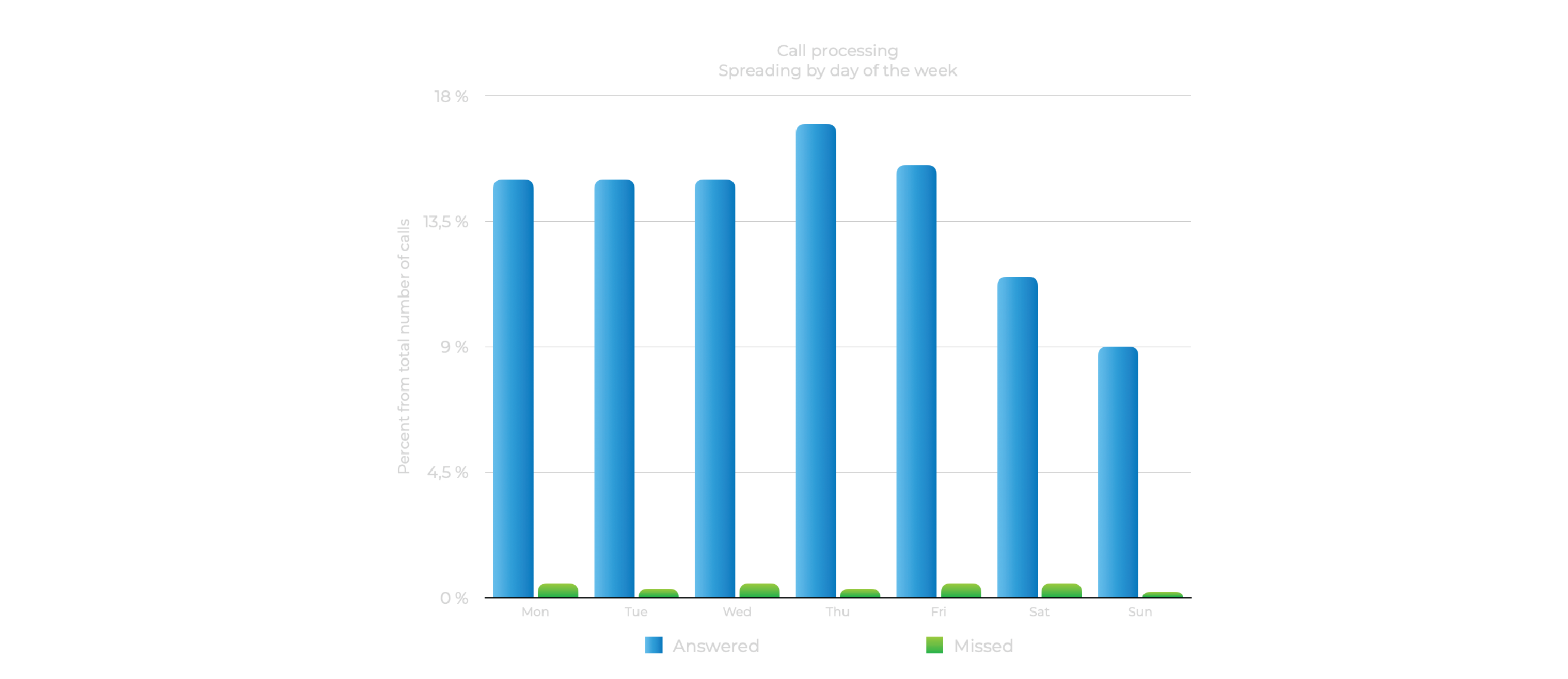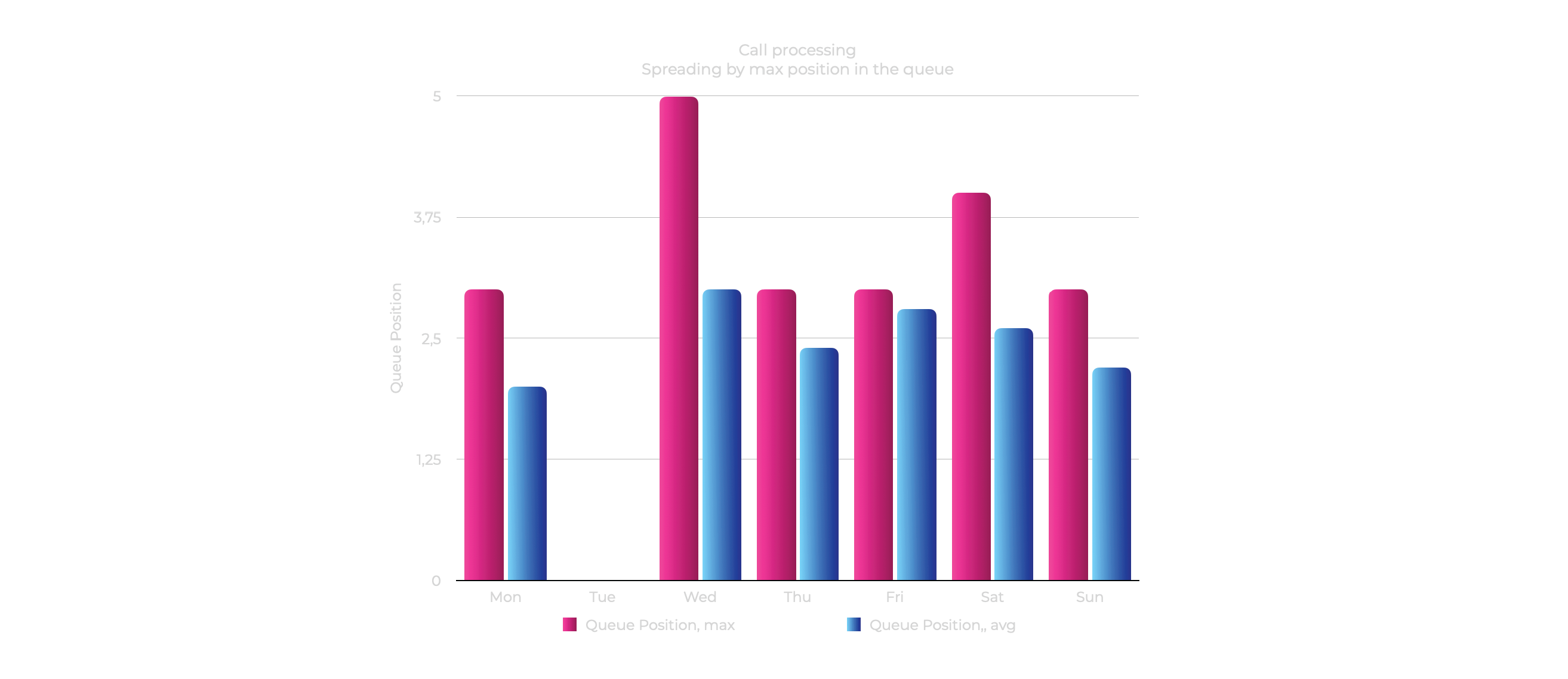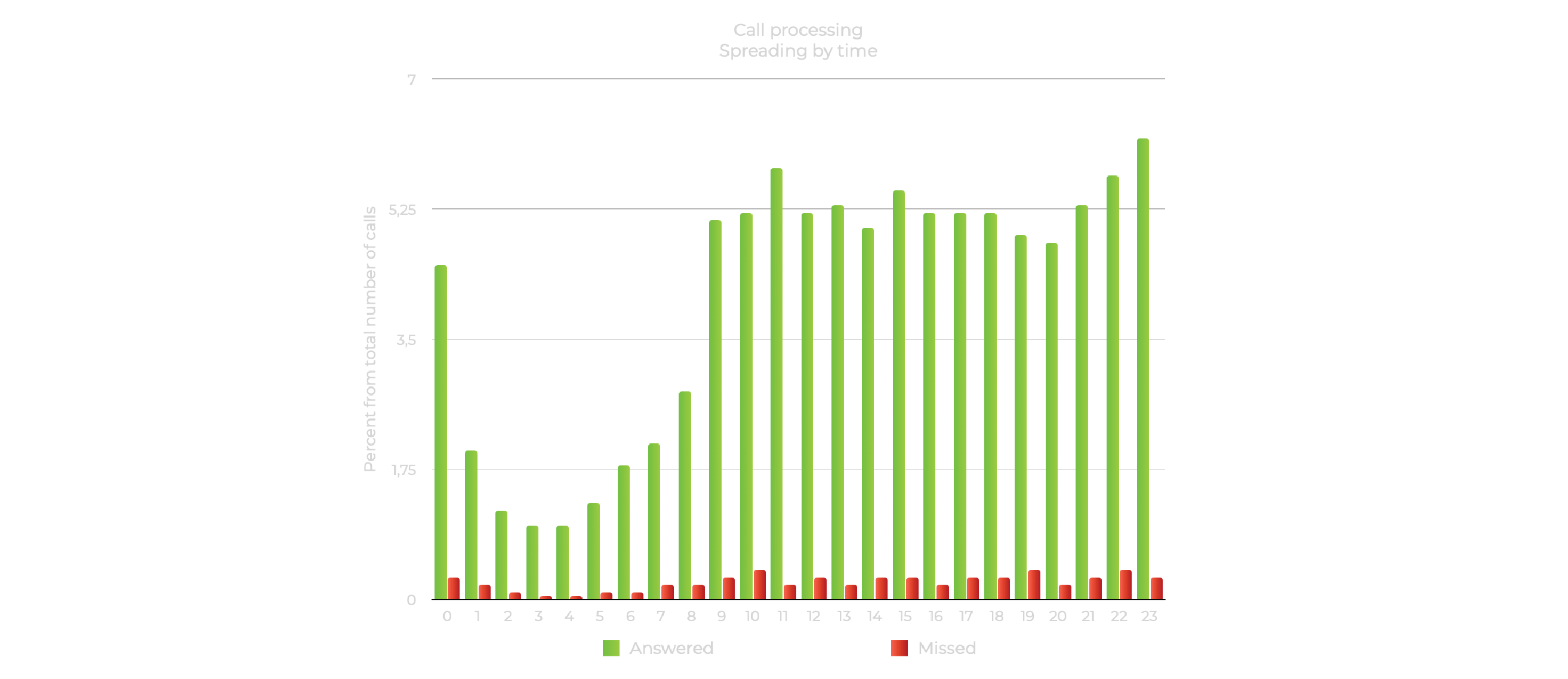Call Center
If your business is closely connected with a large number of customers or the influx of incoming calls to your PBX has increased to the point where your employees can no longer manage, it's worth considering the establishment of a specialized call center within your company structure.
In a call center, everything revolves around handling incoming calls. Call center employees (operators) have no duties other than call handling. Essentially, a call center is a call processing factory. Its task is to ensure the required productivity, which means everything here is geared toward maximizing the speed of call reception and processing. This pertains to both personnel and technical and organizational resources.
Here, we will touch upon the aspects of properly organizing the operation of a call center.
In the previous article, we discussed the analytical processing of statistics and ways to improve office telephony efficiency. However, setting up and configuring a call center is somewhat distinct as it has its own peculiarities.
The main distinctive feature of a call center lies in the fact that the work of operators is regulated by the PBX itself. Specifically, the system sets a time interval within which an operator must answer a call; if that doesn't happen, the call is transferred to the next available operator. The system keeps track of the operators' work, monitors who is available, who is busy, and who is absent. Accordingly, statistics are compiled, and reports on operators' work are generated. Operator performance is measured in terms of the number of answered calls and the speed of their processing.
In everyday life, we often encounter call centers. Examples of typical applications of call centers include online stores, dispatch services, taxi services, food delivery, customer support, and many others.
Proper planning and implementation of a call center should make the process of receiving and processing incoming calls more transparent, predictable, and significantly reduce the number of missed calls.
Where to Start
It's logical to start with defining the tasks that the call center should solve. Based on these tasks, you can form and instruct employees who will play the role of operators. An operator's duties in a call center should include only two tasks: waiting for a call and answering the call. They should not be engaged in anything else. Only in this case can the call center fulfill its purpose. The system constantly monitors these two states and allocates incoming calls among the operators accordingly.
When setting up the call center module in the PBX, it's necessary to specify a time interval within which the operator must answer the call. Additionally, criteria for selecting a specific operator from the pool of available ones need to be defined. It's also important to require operators to indicate their absence in the system, so that the system doesn't consider them as available resources. In the RingoLine PBX, there are two ways to do this. An operator on a break should notify the system about their absence by entering a special digit combination on their phone or by filling out a form if they are using a computer. The system will then exclude them from the call distribution process during their break.
For the proper functioning of the call center, it's advisable to introduce a motivation system for operators; a rating system might help. Ratings can be adjusted based on the number of calls accepted and processed by an operator. It's also possible to configure call distribution algorithms based on operators' ratings.
In the RingoLine PBX, there are around 20 different parameters that can be configured to ensure the call center operates with maximum efficiency and provides comfort both for employees and subscribers.
Call Center Analysis
Collecting and analyzing statistical data about the operation of a call center allows for the proper adjustment of its functioning. To achieve this, reports are used, which are generated by the PBX based on data collected from incoming calls and operator performance.
As an example, let's consider the reports generated by the RingoLine PBX. Let's start with a detailed employee report. The table presents real data from one of our customers using call center functionality.

This report reflects data about the total number of incoming calls for each operator within a specified period, the number of answered and missed calls, average talk time, and the ratio of answered to missed calls expressed as a percentage.
The number of missed calls is an indirect indicator of operator efficiency, as answering calls is their primary and sole task. From the example, we can see that there's an operator who didn't miss any out of 933 calls, while another operator missed 101 out of 519 calls. Analyzing such reports allows for adjusting operator performance and thereby enhancing the overall efficiency of the call center.
The second useful report for analysis is the overall call center performance report. The image below provides an example from real practice.

In this report, we also see the total number of incoming calls, the count of answered and missed calls, but this time aggregated for the entire call center. Additionally, other valuable information for analysis is present, such as the average customer waiting time for an operator response and the maximum initial position of a call in the call queue.
Such a report enables evaluating the call center's performance as a whole. For instance, it helps assess whether there are enough operators to handle incoming calls.
Through this report, you can gauge the overall effectiveness of the call center and determine whether there's a sufficient number of operators.
Thus, the presented reports offer different perspectives on the call center's operation. The operator-specific report provides insights into the call center's efficiency in terms of operator performance evaluation, while the call center report provides an evaluation from the customer's perspective.



The number of missed calls in the call center as a whole and the number of missed calls for individual operators may not match. If, for some reason, an operator doesn't answer a call within the set timeframe, the system marks the call as missed for that operator and transfers it to another available staff member. Therefore, from the call center's standpoint, an incoming call isn't considered lost; however, for the operator who didn't answer it, the call is marked as missed, thereby reducing their rating. Conversely, if all operators are busy at a given moment, a client might hang up without receiving a response. In this case, the incoming call is marked as missed for the call center, but it doesn't impact the operators' statistics, as the call didn't reach them.
If the response is given in the end, the call will be considered answered at the call center, and for those who missed the call, it will be displayed as missed. Similarly, the customer may wait on the line, listen to music, but all operators will be busy. As a result, the customer will hang up and it will be displayed as missed at the call center, but it will not be recorded for the operators because the customer never reached them.
The diagrams shown in the illustration provide additional visual tools for analyzing call center statistics from various perspectives.
The next group of reports that aids comprehensive call center analysis involves statistics gathered about calls.
Analyzing this data helps assess the load on the call center, aiding proper staffing planning and organizing the operation of your call center.
Equipment
In conclusion of this brief article, let's touch upon another important aspect. It's the question of selecting the right equipment for setting up the workstations of call center operators.
Given that an operator's workload throughout the workday is concentrated on telephone operations, it's critical to choose specialized equipment that provides comfort for the operator's work. This includes specialized furniture that allows the operator to sit comfortably for extended periods, specialized headsets with microphones that ensure good sound quality and clear speech transmission, and specifically designed tools for displaying information and computers used by operators.
Properly selecting such equipment will provide you with additional competitive advantages and create added comfort for your employees and clients.
Brief Summary of What We Discussed in This Article:
- Evaluate the flow of incoming calls and decide whether creating a call center is worth considering.
- Define the tasks the call center should address.
- Allocate or assign a group of operators solely responsible for answering calls.
- Develop a system of incentives and clear rules for operators.
- Use reporting systems to analyze the call center and operator performance, adjusting their work for enhanced efficiency.
- Pay attention to the proper organization and equipment of operator workstations.
